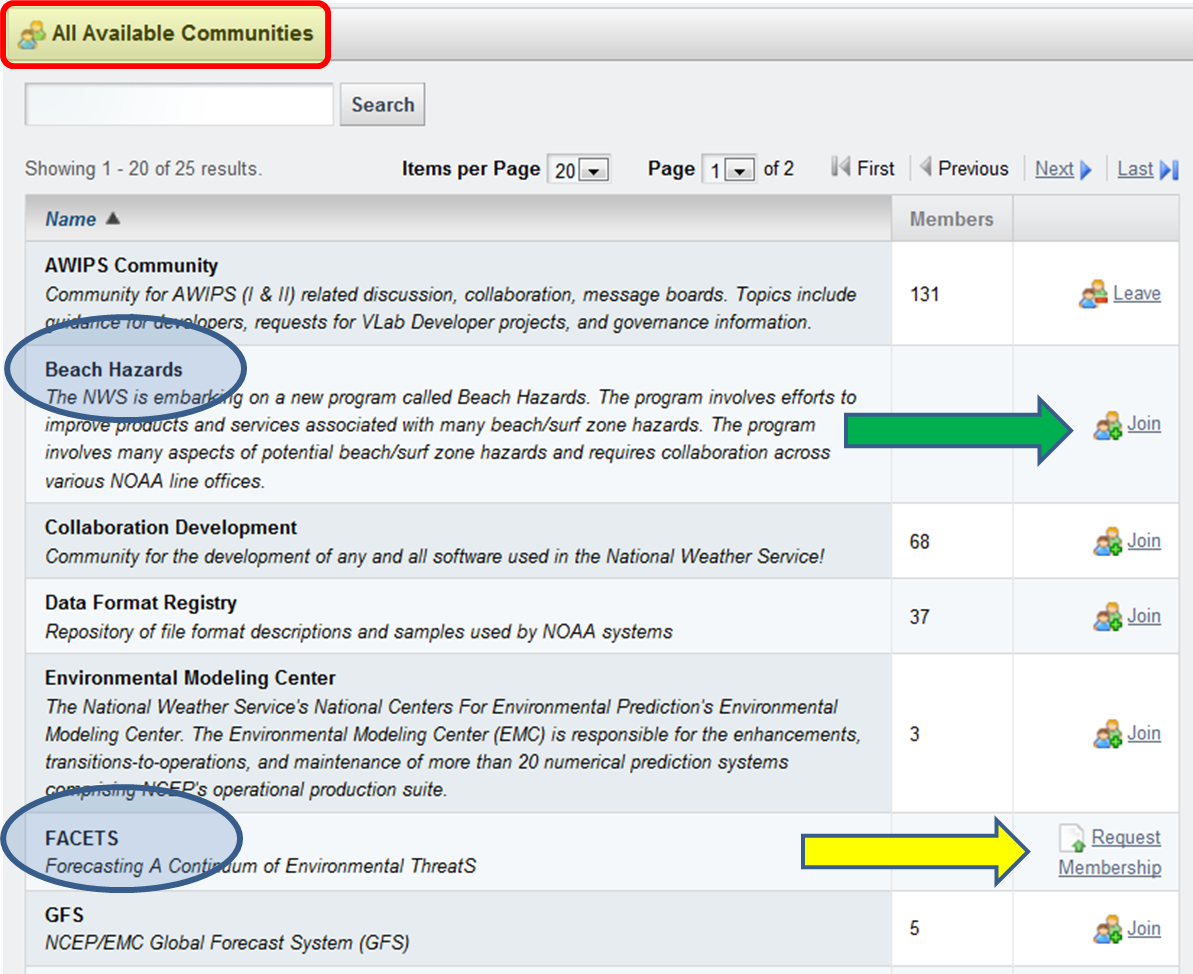Communities
A community is the way the VLab organizes people who share a common interest or goal. Through these groupings of individuals, the VLab facilitates innovation within NOAA by allowing employees to collaborate with each other regardless of where or when they work. One of the first things a new member of the VLab does is review the list communities and join those where they want to contribute.
The VLab provides each community with tools to facilitate communication with and between its members as well as to support the work of the group. Several examples of communication enhancement tools follow:
- Forums - Groupings of message organized by topic
- Wikis - Online documents that can be easily edited by a group of users
- Blogs - Allows a community's subject matter expert to present material of interest to the group's members
- List Servers - Group email address allowing for easy communication to and between community members
To improve the collaboration process, VLab communities offer the following tools:
- Document Libraries - Stores and organizes community documents. They are indexed so document contents can be searched
- Web Forms - A page with data entry fields that allows communities to collect information from its members
- Process Workflow Functionality- Allows automatic processing of documents and web form input through a series of predefined steps
Consider the following example of how a community might get started and support its members.
An NWS employee has an idea for a hail-induced roof damage (HIRD) product. The employee wants to enlist the help of other NWS staff to vet his idea and to potentially help create the web page and software to make the product a reality.
The employee contacts the VLab Support Team using a short web form to request the creation of a new community. Once the community is created, the employee encourages a few individuals to join the community and together they use the forum tool to discuss the HIRD product idea.
After concluding that a HIRD product would be of value, community members use the wiki tool to build a list of inputs needed to create the product and what the product would contain.

Once the input requirements and the product contents are defined in the wiki, the team decides to create a development project with the intent of creating an Advanced Weather Interactive Processing System (AWIPS) tool. The team uses Redmine to manage the numerous task required to create the software application. The computer code is stored in the VLab, using a GIT registry, so it has access to AWIPS baseline code. This close integration with AWIPS speeds up the software development and testing process.
With the software created and tested, community members work within the AWIPS research to operations process to implement the application for use across the NWS.
Following implementation, community members continue to use VLab tools to track bug fixes and come up with new and innovative ideas to improve the HIRD product.
NOAA employees can log in now by going to the Sign In page. Once signed in, locate the "All Available Communities" section of the page. The section lists the various communities in the VLab and enables users to join open communities or request membership in communities that are restricted. The image to the right shows the option to join the Beach Hazard community and begin participating immediately. For the FACETS community, users must request membership and then wait for the community owner to respond.



